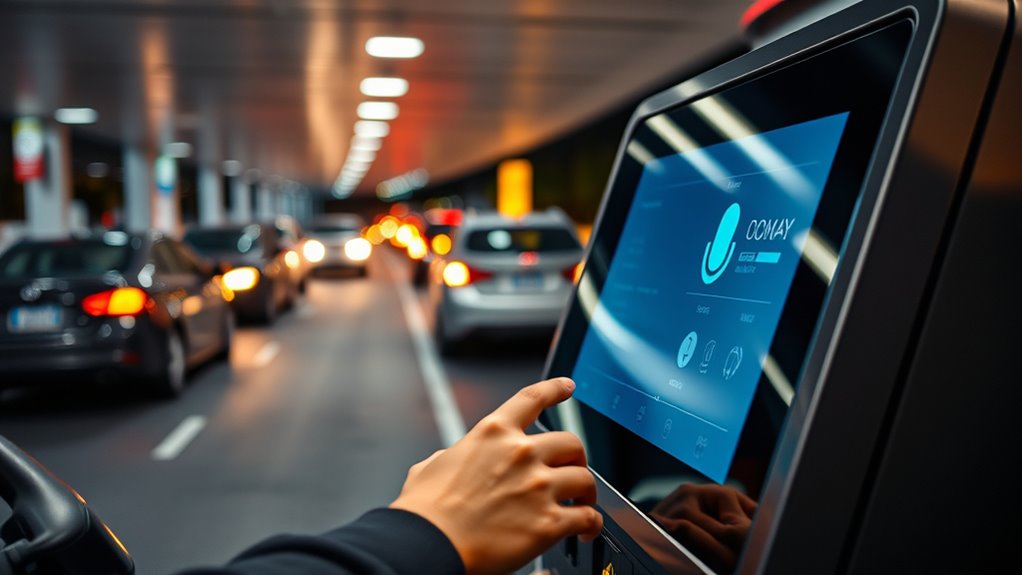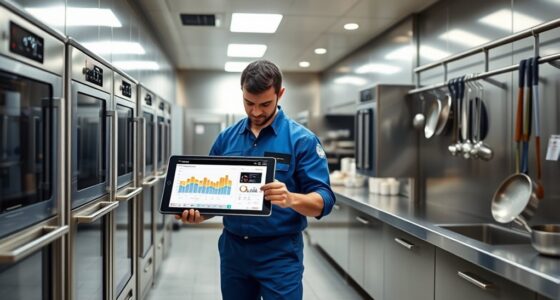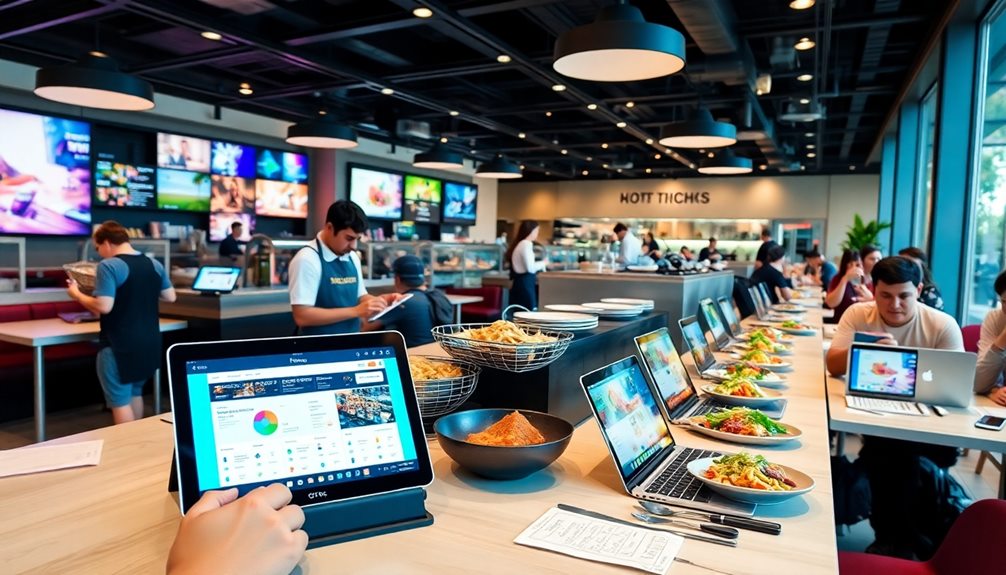Voice-assisted drive-thru systems use advanced speech recognition technology to improve your ordering process. They help capture orders accurately, handle diverse accents, and reduce errors, making transactions quicker and smoother. These systems often feature natural language understanding, noise cancellation, and real-time menu updates. They boost customer satisfaction and operational efficiency for businesses. If you’re curious about how these systems evolve and how they can benefit your operations, continue exploring to discover more.
Key Takeaways
- Voice-assisted drive-thru systems use natural language processing to accurately take orders and understand diverse speech patterns.
- They feature noise-canceling microphones and intuitive interfaces to improve communication in busy environments.
- Integration with menu databases and POS systems ensures real-time updates and seamless transactions.
- Advanced AI enables personalized recommendations by recognizing customer history and preferences.
- These systems reduce wait times, minimize errors, and enhance customer satisfaction through faster, contactless service.
The Evolution of Drive-Thru Technology
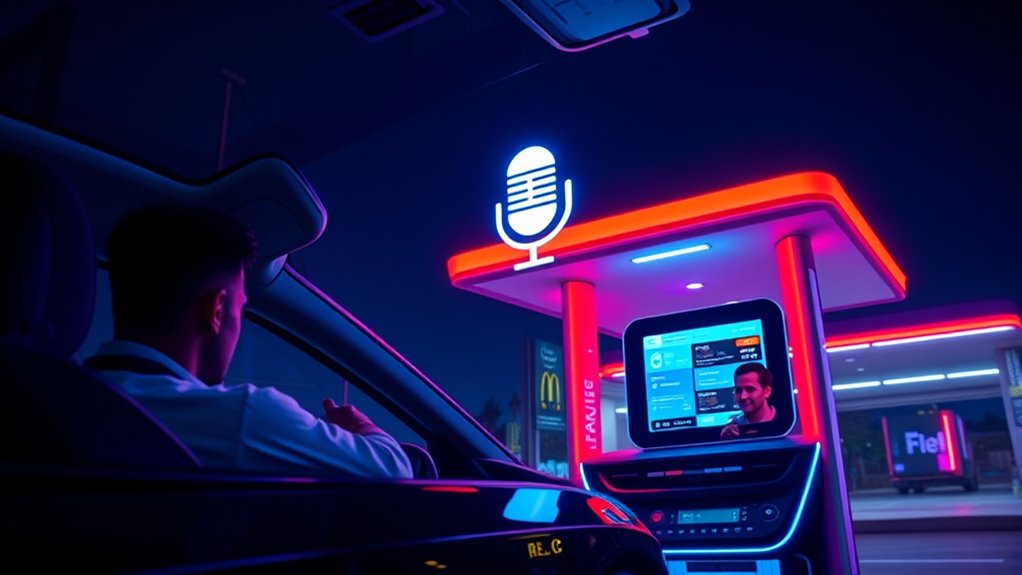
The evolution of drive-thru technology has dramatically changed how you order and receive food. It started with simple speaker boxes, allowing you to place orders without leaving your car. Over time, menu boards became digital, giving you clearer choices and faster updates. As technology advanced, systems integrated scanners and payment options, making transactions quicker and more seamless. Today, touchscreens and voice recognition are streamlining the process even further. These innovations reduce wait times, minimize errors, and enhance your overall experience. The focus has shifted from manual interactions to automated, efficient systems that cater to your convenience. Each step in this evolution aims to make ordering easier, faster, and more accurate, reflecting the ongoing drive to improve customer satisfaction and operational efficiency in drive-thru services. Incorporating natural language processing allows systems to better understand and respond to customer orders naturally and efficiently.
How Voice Recognition Enhances Ordering Accuracy

Voice recognition technology substantially improves ordering accuracy by precisely capturing your spoken orders and reducing misunderstandings. It listens carefully, ensuring your specific choices—like drink sizes or meal modifications—are recorded correctly. This minimizes errors caused by unclear speech or background noise. Here’s how it helps:
Voice recognition enhances order accuracy by clearly capturing your spoken choices and minimizing misunderstandings.
- It processes natural language, understanding varied accents and phrasing.
- It cross-checks your order with stored menu options for accuracy.
- It prompts you to clarify ambiguous or unclear requests.
- It automatically corrects common pronunciation mistakes, reducing miscommunication.
- Incorporating astrological compatibility insights can enhance customer interactions and personalize the experience.
Key Features of Modern Voice-Assisted Systems
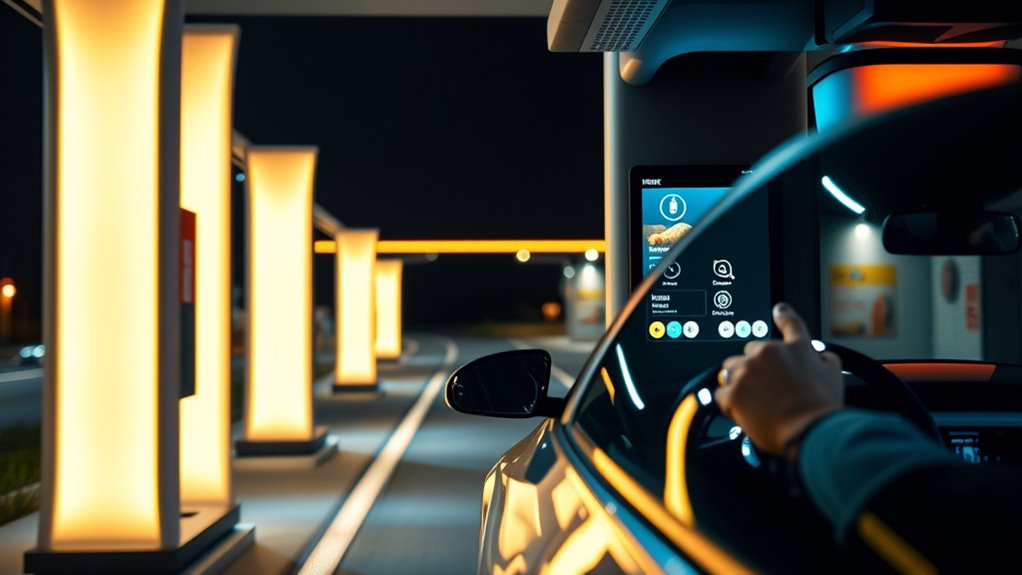
Modern voice-assisted drive-thru systems come packed with features designed to streamline your ordering experience. Advanced natural language processing allows the system to understand a wide range of accents and speech patterns, reducing misunderstandings. Noise-canceling microphones ensure clear communication even in busy environments. Integration with menu databases provides real-time updates on available items and promotions, making your choices easier. Voice prompts guide you smoothly through the order process, minimizing wait times. Many systems include error correction capabilities, prompting you to confirm or modify your selections. Some also utilize AI learning to adapt to your preferences over time. These features work together to create a seamless, efficient, and accurate drive-thru experience, saving you time and reducing frustration.
Benefits for Customers and Business Operations
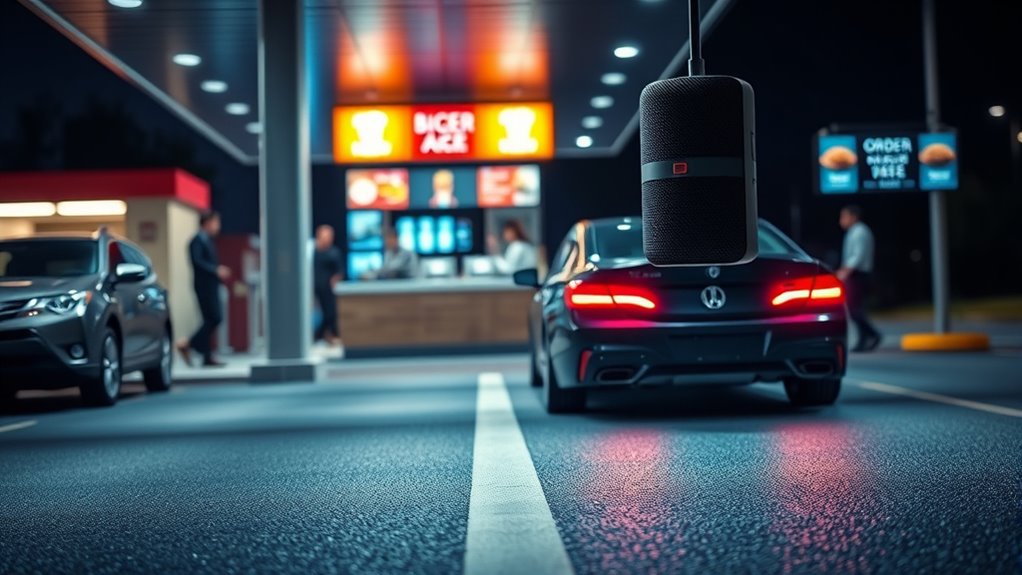
Implementing voice-assisted drive-thru systems benefits both customers and businesses by enhancing efficiency and satisfaction. These systems streamline order-taking, reducing wait times and minimizing errors. For you, this means quicker service and a smoother experience. Businesses, on the other hand, see improved throughput and customer loyalty. Here are some key benefits: 1. Faster service speeds up lines and reduces frustration. 2. Fewer order mistakes increase accuracy and customer trust. 3. Consistent interactions lead to better customer experiences. 4. Data collection helps tailor marketing and optimize operations. Incorporating customer feedback can further refine these systems for better performance and satisfaction.
Challenges and Limitations of Voice-Enabled Drive-Thrus
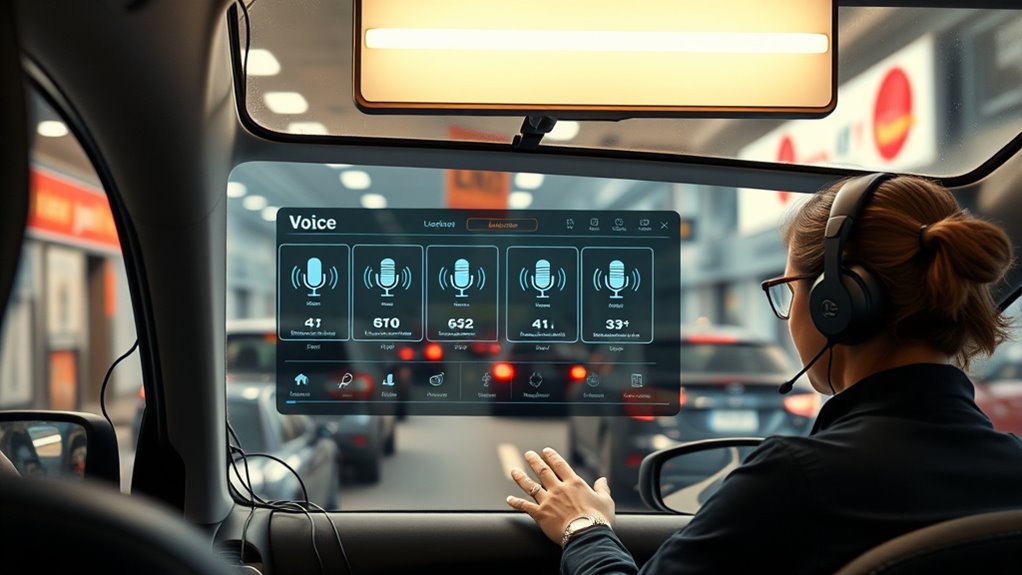
While voice-enabled drive-thrus offer many advantages, they also face several challenges that can hinder their effectiveness. Background noise from traffic, weather, or other customers can interfere with speech recognition, leading to errors or misunderstandings. Accents, dialects, and speech variations can cause the system to misinterpret commands, frustrating customers. Limited vocabulary and complex menu options may reduce accuracy, forcing you to repeat orders or switch to traditional methods. Technical glitches, such as connectivity issues or software bugs, can cause delays and reduce reliability. Additionally, some customers may feel uncomfortable or uncertain about speaking to a machine, which impacts user experience. Furthermore, sound design techniques can be employed to improve audio clarity and reduce background noise in these systems. Overall, these limitations highlight the need for ongoing improvements in technology and user training to maximize the potential of voice-enabled drive-thrus.
Integrating Voice Systems With Existing Infrastructure
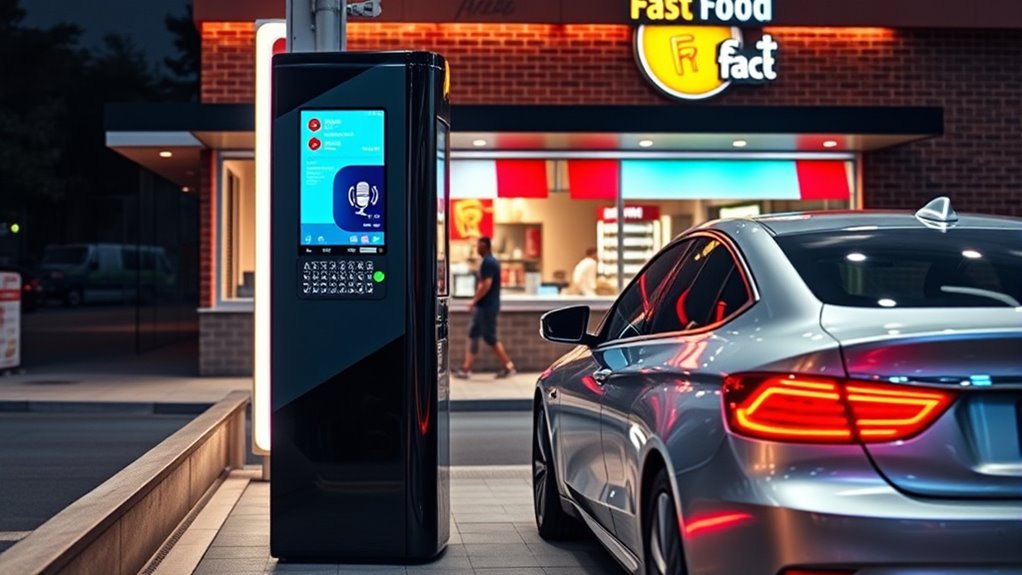
Integrating voice systems with existing drive-thru infrastructure requires careful planning to guarantee seamless operation. First, assess your current setup, including POS systems, order displays, and speaker hardware. Second, identify compatibility issues between the new voice technology and existing equipment. Third, create a detailed integration plan, including timelines and resource allocation. Fourth, test the system extensively, checking for audio clarity, response accuracy, and connectivity. Additionally, ensuring that audio quality is maintained throughout the system is crucial for clear communication. By focusing on these steps, you minimize disruptions and ensure smooth integration. Remember, seamless communication between the voice system and your infrastructure is vital for customer satisfaction. Proper planning reduces errors, speeds up service, and maximizes the benefits of your new technology. With a strategic approach, you’ll successfully enhance your drive-thru experience without compromising existing operations.
Future Trends in Voice-Driven Quick-Service Dining
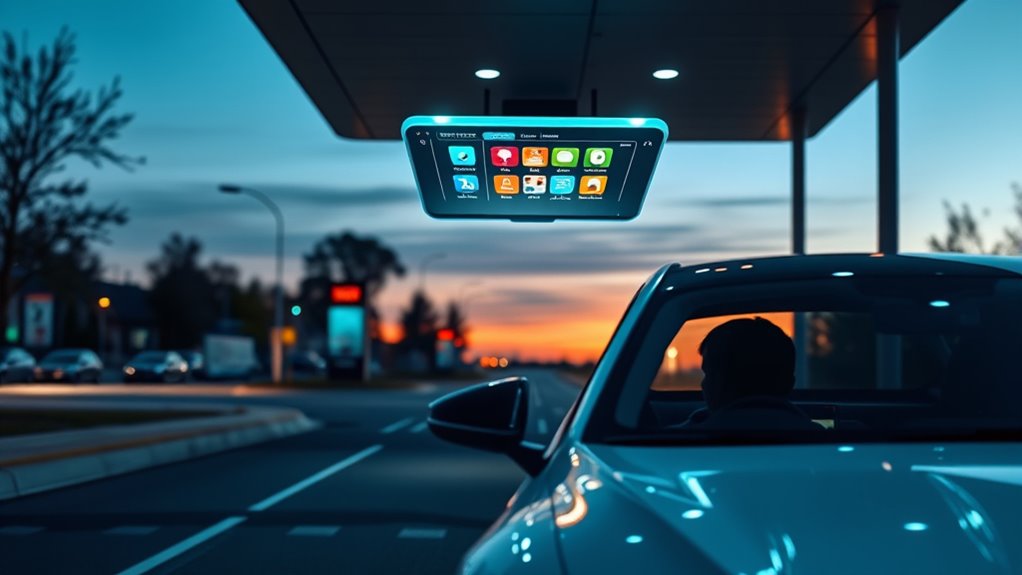
As voice-driven technology continues to evolve, quick-service restaurants are poised to see even more sophisticated and personalized drive-thru experiences. Expect AI to become better at understanding natural language, allowing you to communicate more naturally without needing to pause or repeat. Voice assistants will soon recognize individual preferences, dietary restrictions, and order history, enabling tailored recommendations and faster service. Integration with facial recognition and mobile apps will create seamless, contactless transactions. Additionally, advancements in emotion detection could enable systems to adapt based on your tone or mood, making interactions more empathetic. As these technologies develop, you’ll enjoy quicker, more accurate orders and a more engaging, personalized drive-thru experience that feels intuitive and effortless. Moreover, understanding relationships dynamics can help improve customer service interactions by fostering empathy and connection.
Case Studies: Successful Implementations
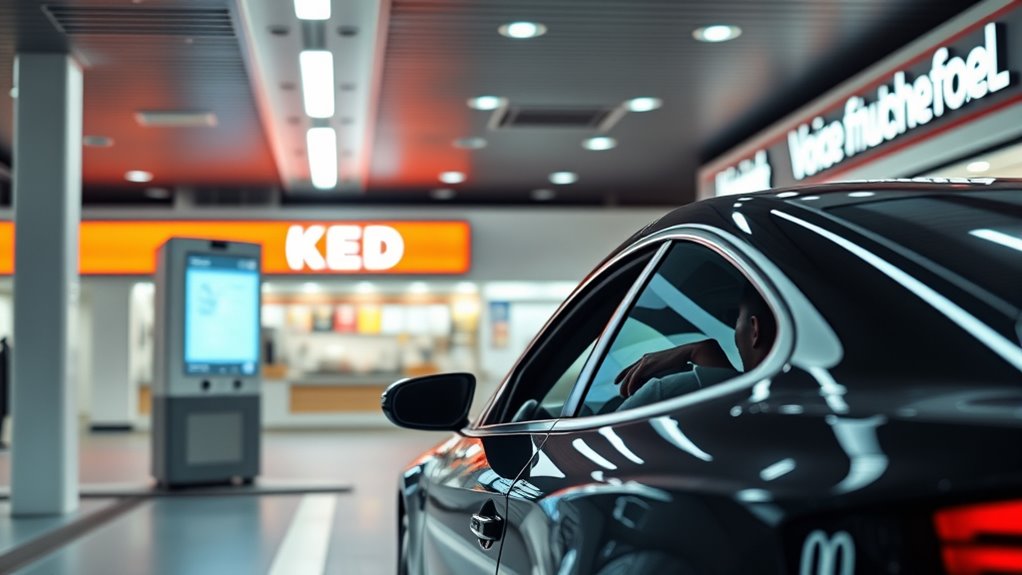
Several quick-service restaurants have already seen remarkable success by implementing voice-assisted drive-thru systems. These solutions boost efficiency, accuracy, and customer satisfaction. For example:
- A fast-food chain reduced order errors by 35%, improving overall service speed.
- A regional restaurant increased order capacity during peak hours by 20%, minimizing wait times.
- A major brand reported higher customer satisfaction scores, thanks to smoother interactions.
- Costs for order takers decreased, allowing staff to focus on other customer service areas.
- Integrating voice recognition technology into operations can further enhance system performance and reliability.
These case studies highlight that voice-assisted systems streamline operations, enhance accuracy, and elevate the customer experience. By adopting such solutions, you can stay competitive, reduce errors, and create a more efficient drive-thru environment.
Tips for Selecting the Right Voice-Assist Technology
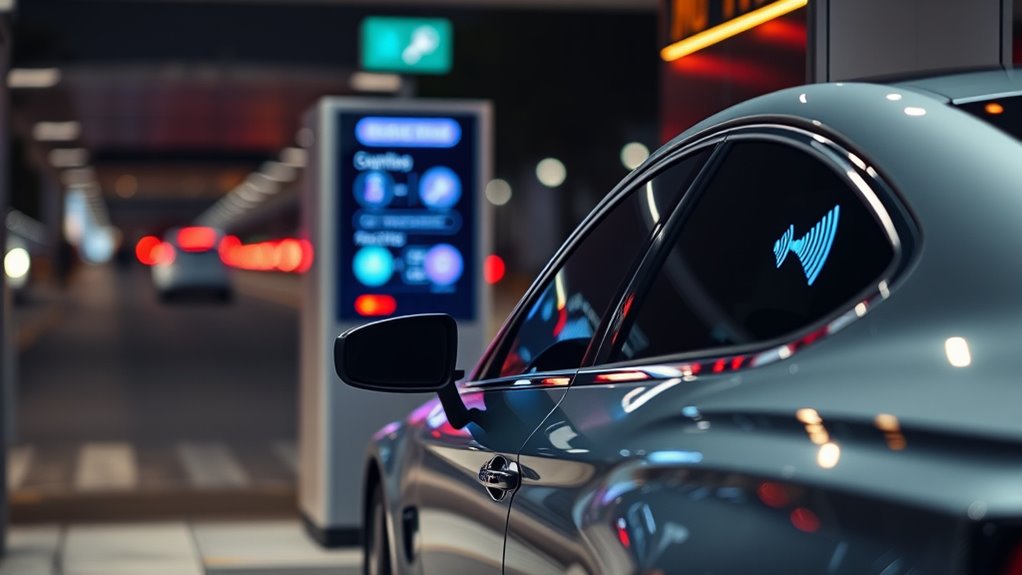
Choosing the right voice-assist technology is essential for maximizing your drive-thru’s efficiency and customer satisfaction. First, evaluate your business needs—do you require a system that handles high traffic, or one that emphasizes personalized service? Consider compatibility with your existing POS and kitchen systems to guarantee seamless integration. Voice recognition accuracy is critical; choose technology that understands diverse accents and background noise. Ease of use for staff and customers is also key—intuitive interfaces reduce errors and speed up service. Reliability and support are indispensable; opt for providers with proven track records and responsive customer service. Lastly, weigh costs against features, making sure you get the best value without sacrificing quality. Selecting the right system sets the foundation for a smoother, more efficient drive-thru experience. Incorporating predictive modeling can further optimize service flow by forecasting peak times and staffing needs.
Frequently Asked Questions
How Do Voice-Assisted Drive-Thrus Handle Multiple Languages?
You might wonder how drive-thru systems manage multiple languages. They typically use advanced voice recognition technology that detects and switches between languages seamlessly. When you place your order, the system identifies your language, often through initial prompts or language selection options. This helps guarantee clear communication and a better customer experience. Some systems even learn your preferred language over time, making future orders quicker and more personalized.
What Security Measures Protect Customer Data in Voice Systems?
Think of customer data like treasure—you want to keep it safe. You’re protected through encryption, which locks data so only authorized systems can access it. Multi-factor authentication adds extra layers, making it harder for intruders to breach. Regular security audits identify vulnerabilities, and strict access controls limit who can see sensitive info. With these measures, your customer data stays secure, like a well-guarded vault in the digital world.
Can Voice Systems Adapt to Regional Accents and Dialects?
You might wonder if voice systems can handle regional accents and dialects. Today, many advanced systems use machine learning and large voice databases to adapt to diverse speech patterns. They analyze pronunciation and intonation, improving accuracy over time. By continuously learning from user interactions, these systems become better at understanding different accents, making your experience smoother and more personalized, regardless of regional language differences.
How Do Voice-Activated Drive-Thrus Manage Complex or Customized Orders?
When you place complex or customized orders, voice-activated drive-thrus use advanced speech recognition and natural language processing to comprehend your requests. They analyze your words in real time, often asking follow-up questions to clarify details. This dynamic interaction ensures your order is accurate. The systems learn from previous interactions, improving their ability to handle unique or complicated orders, making your experience smoother and faster.
What Maintenance Is Required for Voice Recognition Hardware and Software?
You need to regularly update the software to fix bugs and improve accuracy, ensuring the system recognizes speech correctly. Clean the microphones and hardware components to prevent dust and debris from affecting performance. Check for hardware wear and replace faulty parts promptly. Also, monitor the system’s performance and retrain the software as needed to adapt to new accents or slang, maintaining smooth operation and customer satisfaction.
Conclusion
As you embrace voice-assisted drive-thru systems, you step into the future of quick-service dining, much like imagining a robot waiter in a 1950s diner. These innovations boost accuracy, speed, and customer satisfaction, transforming your operations. While challenges exist, choosing the right technology now sets you apart. So, stay ahead of the curve, and let voice recognition be the guiding star that revolutionizes your drive-thru experience—no flux capacitor required.
